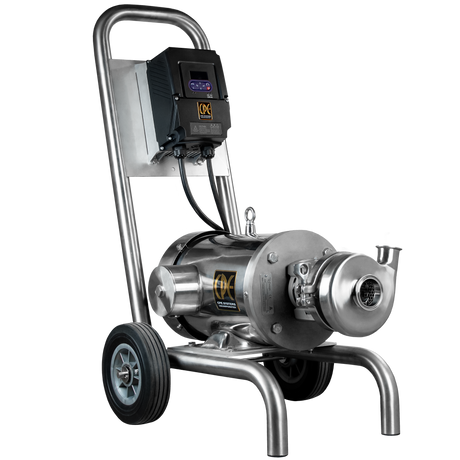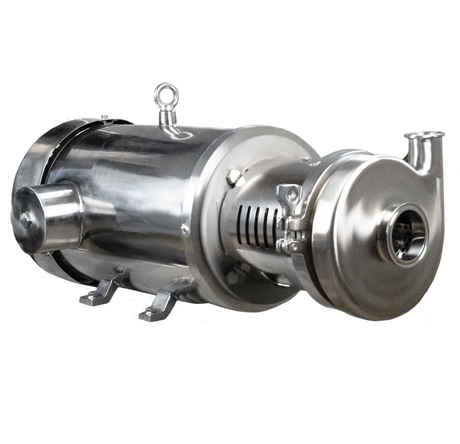Homogenization: Definition, Process, and Applications
Homogenization is the process of mixing, emulsifying, and evenly distributing particles from two immiscible liquids or dispersions. Fat globules are forced through small openings at high pressure, causing them to become consistent in size and distribute uniformly throughout a fluid.
The first commercial mechanical homogenizers were not invented until the late nineteenth century, and they were still mostly used to make homogenized milk. Before homogenizers, milk was shaken or mixed to achieve the desired consistency. It was not until the twentieth century that homogenization became widely used. With the introduction of high-pressure homogenization, a method for breaking down fat globules using a high-pressure pump, homogenization began to spread beyond the dairy industry, into sectors such as emulsions and suspensions. Over the next few decades, homogenization technology advanced to include ultrasonic homogenization, high-shear mixing, and microfluidization. These breakthroughs led to the development of a wide range of homogenization equipment suitable for a variety of industries.
Homogenization is commonly used in the food and beverage industries. It improves the viscosity, flavour, and texture of cream, yoghurt, sauces, soups, juices, oils, and other products. Pharmaceutics, particularly medical creams, antibiotics, and other products, can all benefit from homogenization.
Benefits of Homogenization in the Food Processing Industry
Homogenization plays an important role in enhancing the overall quality and shelf life of food products by offering a variety of benefits. Beyond extending shelf life, this process enhances flavour, mouthfeel, and aids in spoilage reduction, all while preserving desirable enzymes and proteins.
The uniform texture provided by homogenization is a highly valued benefit, especially in the processing of dairy products. This results in a better visual product and a better sensory experience for the consumer.
Homogenization contributes to the stability and preservation of food products. It eliminates potential pathogens and other microbes without depleting nutrients. Unlike traditional heat treatments, which can destroy naturally occurring nutrients in food, high-pressure homogenization preserves them and makes them safe to consume. It also increases shelf life due to the intense pressure applied by high-pressure homogenizers, which causes most foods to achieve more stable chemical structures.
Homogenization is commonly used in the food industry to stabilize emulsions. It is the mixing of two immiscible liquids, such as oil and water. Homogenization prevents these components from separating, resulting in a stable product. The two most common techniques are high-pressure homogenizers and rotor-stator mixers.
Homogenization vs. Food Additives
As consumers become more health-conscious, they are increasingly drawn to health-related products labelled "no preservatives," "no additives," or "organic."
A common concern in food processing is increasing viscosity, which is frequently achieved through additives. However, the use of homogenizers has proven to be an effective method of increasing viscosity without the use of additional substances. Another benefit is the natural preservation of food products without jeopardizing the nutritional value. This is achieved by reducing the size of fruit and vegetable cells during processing. This not only extends the product's shelf life but also allows nutrients to be preserved without the use of excessive preservatives. This process also aids homogenization in the overall aesthetic and taste of products, eliminating the need for artificial colorings to achieve visual appeal. Additionally, by carefully adjusting the working pressure of the homogenizer, manufacturers can reduce the generation of excess heat. This temperature control is critical in preserving the natural taste and flavours of the product.
Types of processes
Mechanical Homogenization
Mechanical homogenization uses mechanical force to reduce the size of the particles. To accomplish this, the mechanical homogenizer agitates the solutions at high speeds. This generates shear forces, turbulence, and cavitation, which reduce particle size. Two primary mechanisms are used to accomplish this: blade-type homogenizers and rotor-stator homogenizers.
While effective, mechanical homogenization has limitations in terms of the particle size range that can be achieved and the potential impact on product quality.
Pressure Homogenization
Pressure homogenization is accomplished through the use of a valve-seat scheme, in which a non-homogenized product enters the system at high pressure and low velocity. Because of the synergistic effect of homogenization and temperature increase, high-pressure homogenizers are widely used. As a result, the product has a longer shelf life and better physicochemical properties.
The drawbacks include equipment cost, and the temperature increase needs to be controlled to prevent adverse effects on certain products.
Ultrasonic Homogenization
Ultrasonic homogenization applies sonic pressure waves to induce liquid streaming and the rapid formation of microbubbles, resulting in homogenization. It is primarily used to extract bioactive compounds and as a pre-treatment before dehydrating fruits and vegetables.
Ultrasonic homogenization has limitations due to its specific application.
QIM Shear Pump
The QIM+ Shear Pump is a mechanical homogenization pump that has been created as the perfect solution for applications that require to be homogenized or disintegration. Its different stator options are what make our QIM+ the most versatile mixer in the market, adjusting to the desired process at an affordable price.
The QIM+214 pump head's distinctive semi-open impeller is coupled with a perforated backplate, contributing to its one-of-a-kind design. The shear effect is caused by radial flow through the perforations.
Stator Types
Straight Radial Slots
-
Applications: Ideal for powder mixing and lump disintegration.
-
Functionality: The straight radial slots in the stator design facilitate effective mixing and disintegration of solid powders, ensuring a homogeneous blend.
Small Radial Holes
-
Applications: Perfect for emulsification processes.
-
Functionality: The stator with small radial holes excels in emulsification, providing finely dispersed mixtures for various applications.
Large Radial Holes
-
Applications: Suitable for chopping soft solids into smaller particles.
-
Functionality: Designed with larger radial holes, this stator is effective in breaking down soft solids, creating smaller and more manageable particles.
The QIM+ features a self-lubricating internal seal and a casing o-ring, enhancing durability, preventing leakage, and delivering efficient operation. It excels in delivering high flow rates, making it suitable for applications that require rapid processing. In addition to the already mentioned features, the QIM+ meets 3-A and EHEDG Standards. This ensures that the pump is compliant with industry standards.
Conclusion
Homogenization gives products a uniform texture, stabilizes emulsions, extends shelf life, preserves nutrients, and reduces the need for additives and preservatives. We've come a long way from shaking milk to achieve a desired consistency. Products like the QIM+ Shear pump make emulsifying, disintegrating, and homogenizing a smooth process. Homogenization will continue to remain an important tool due to consumers favouring natural and additive-free products.





